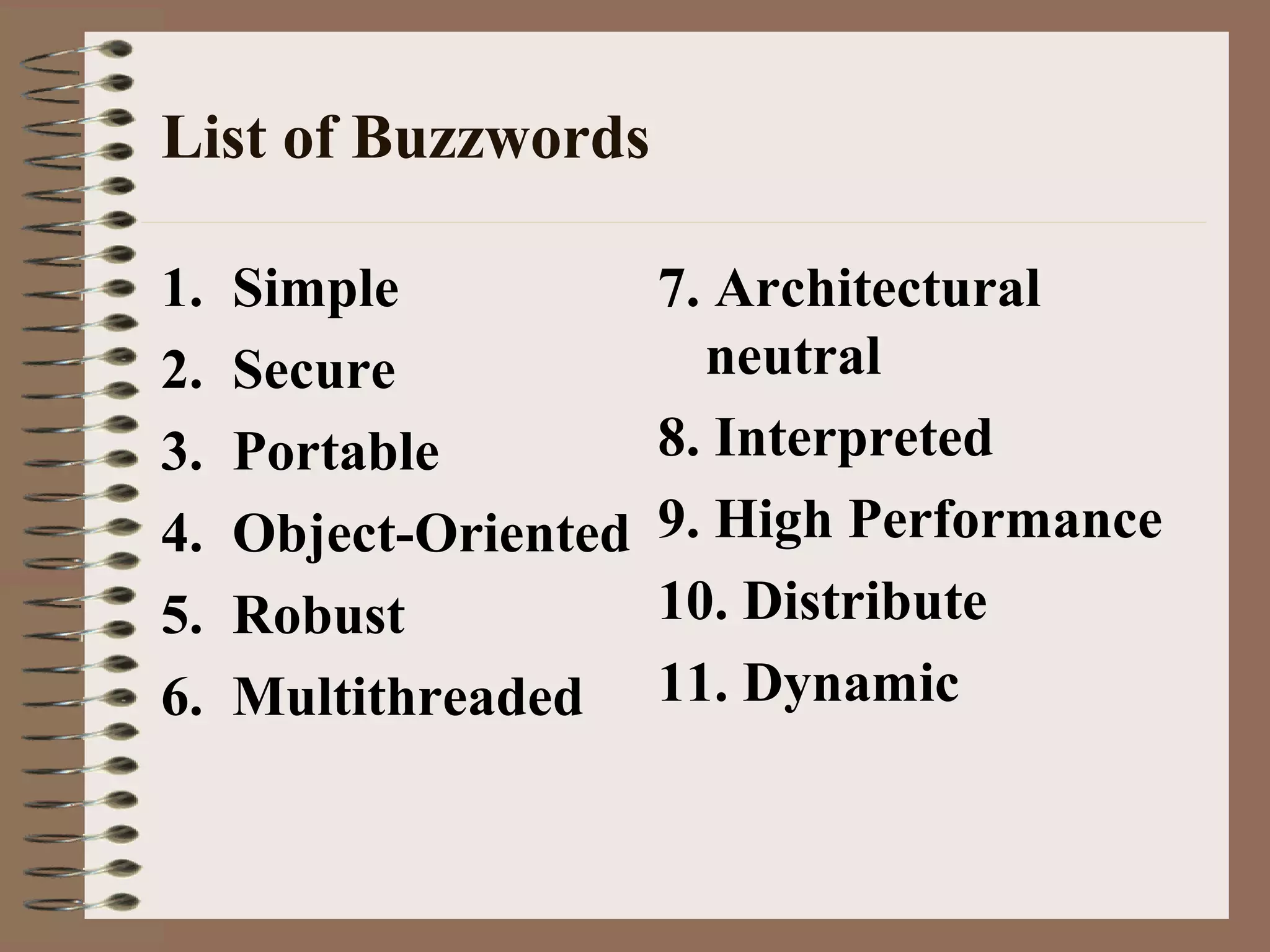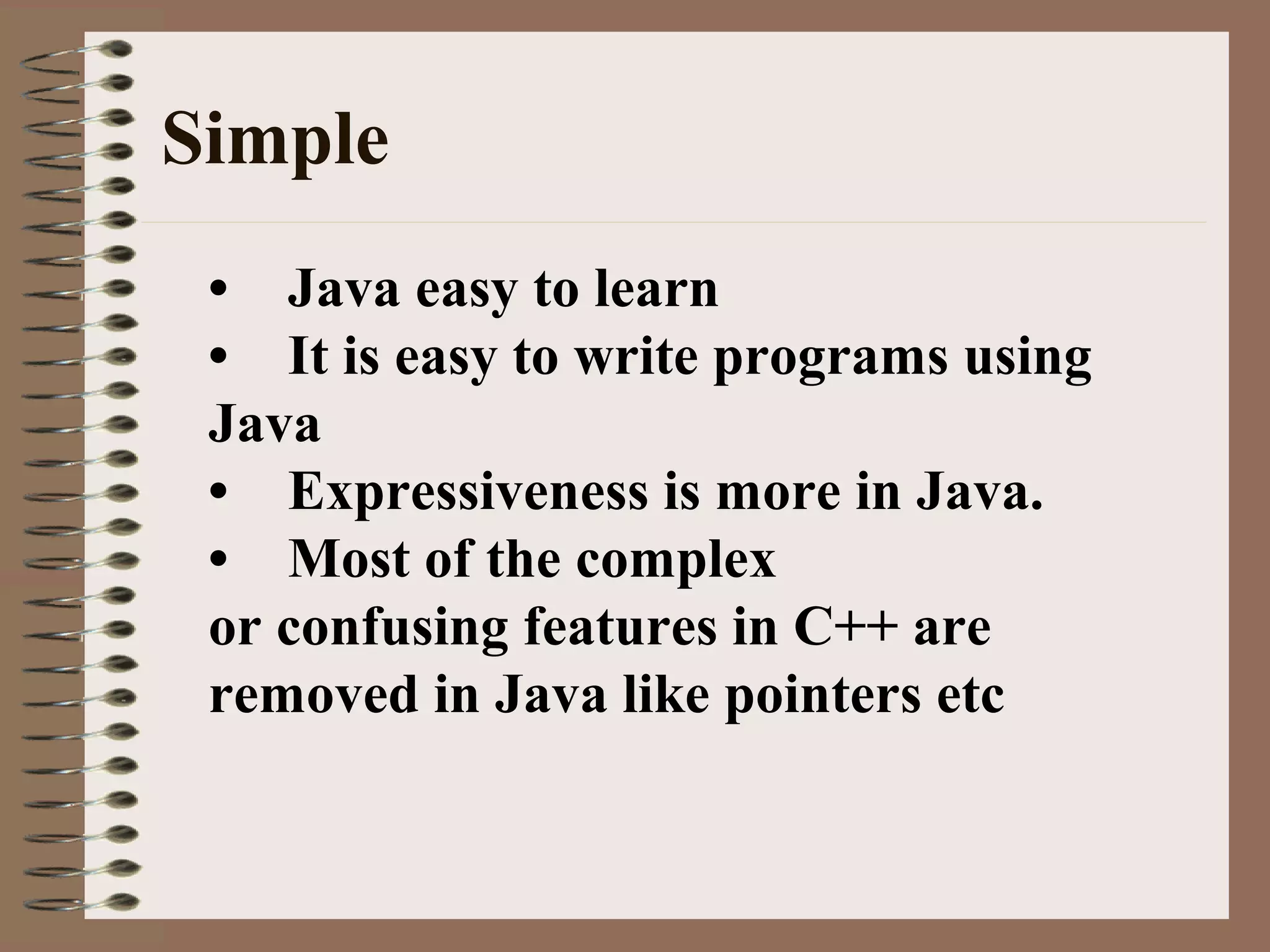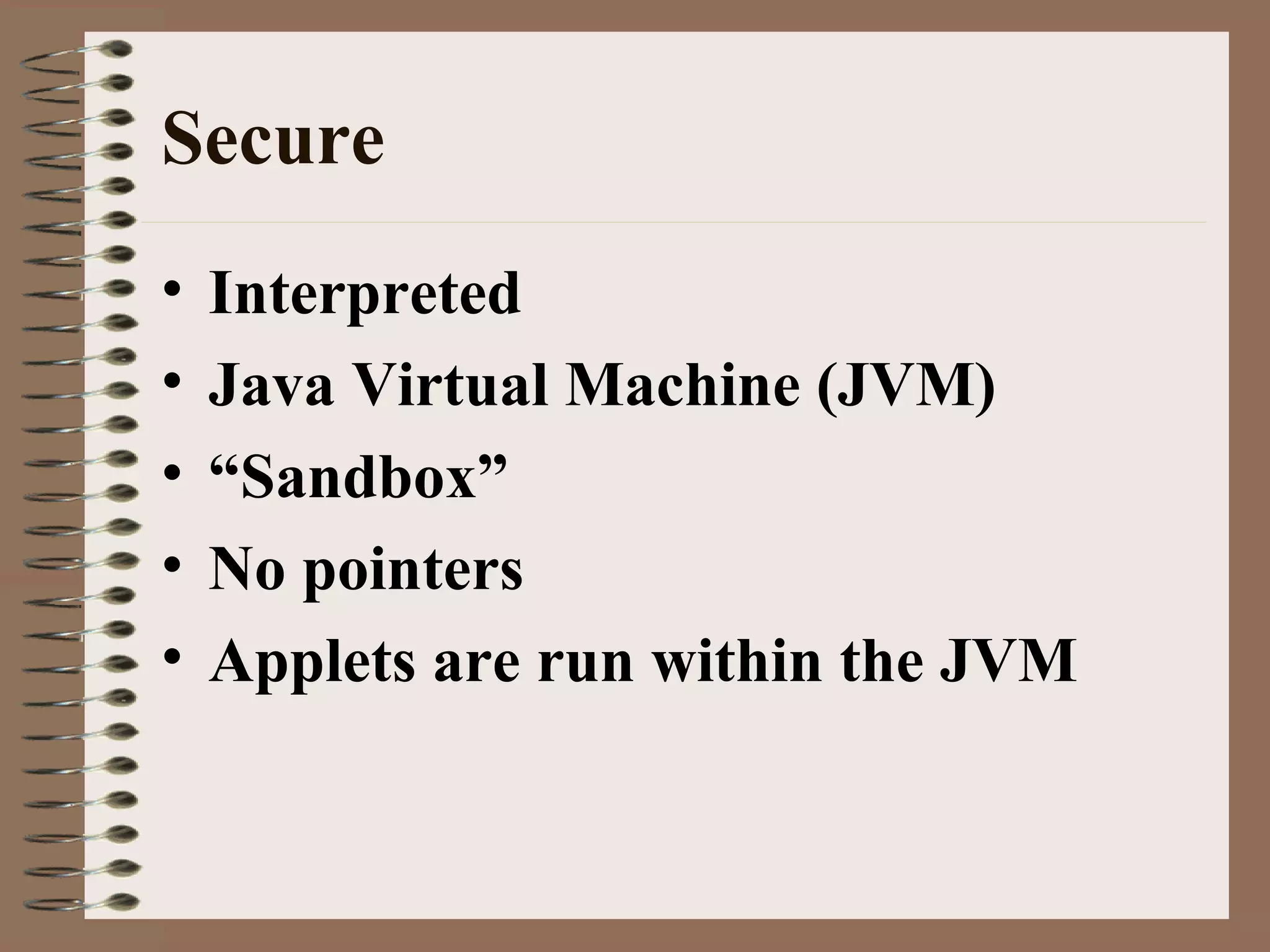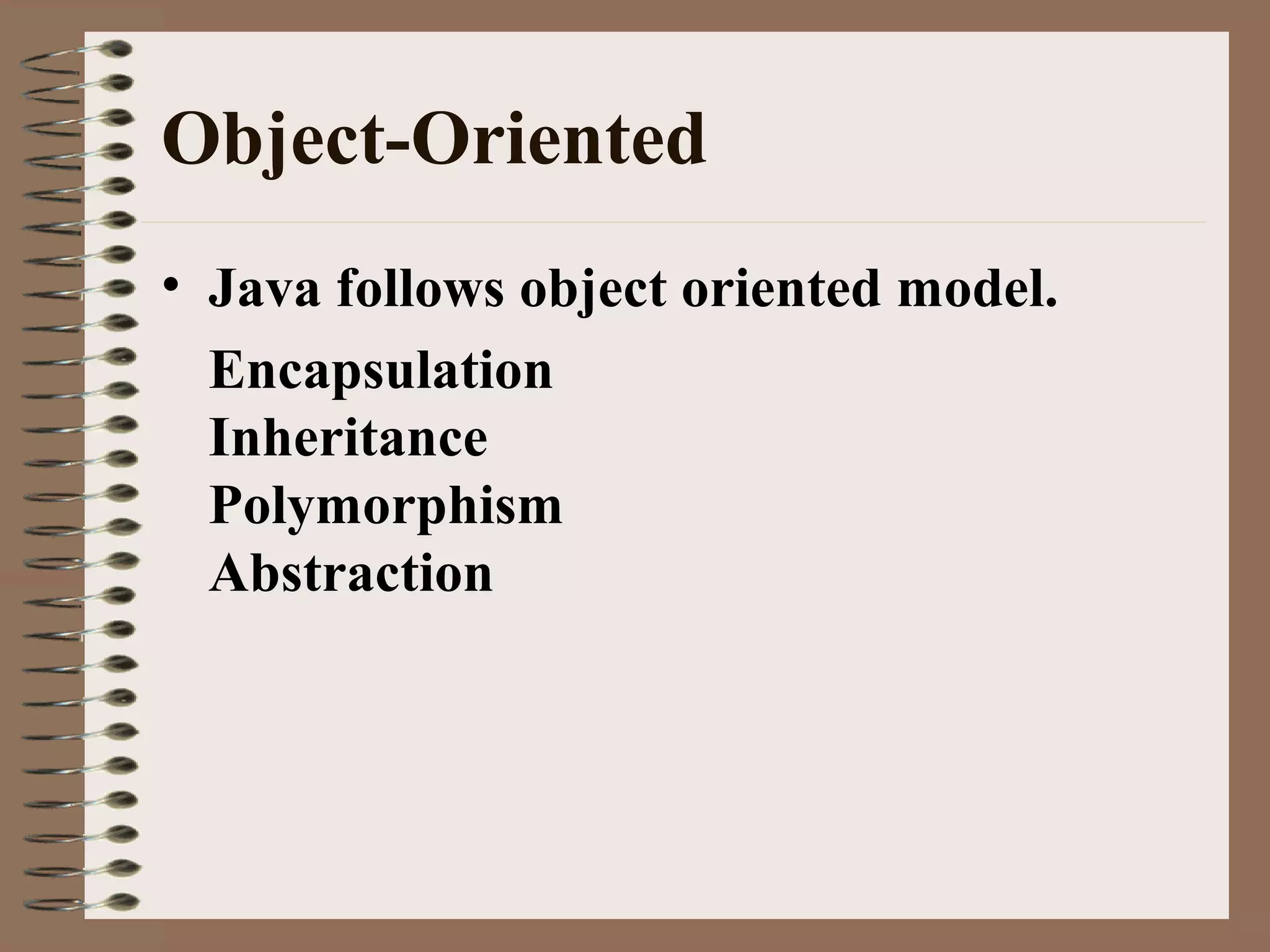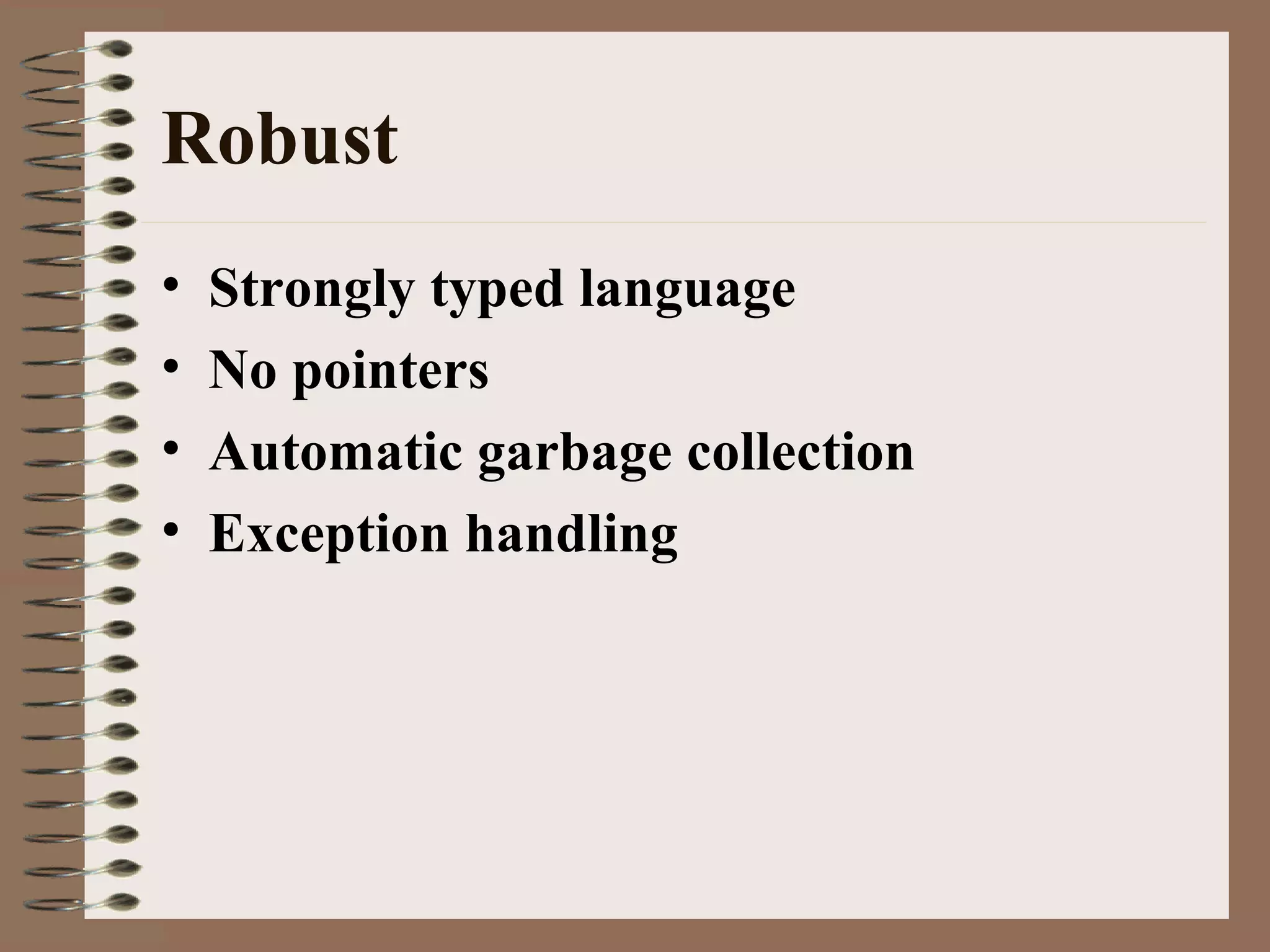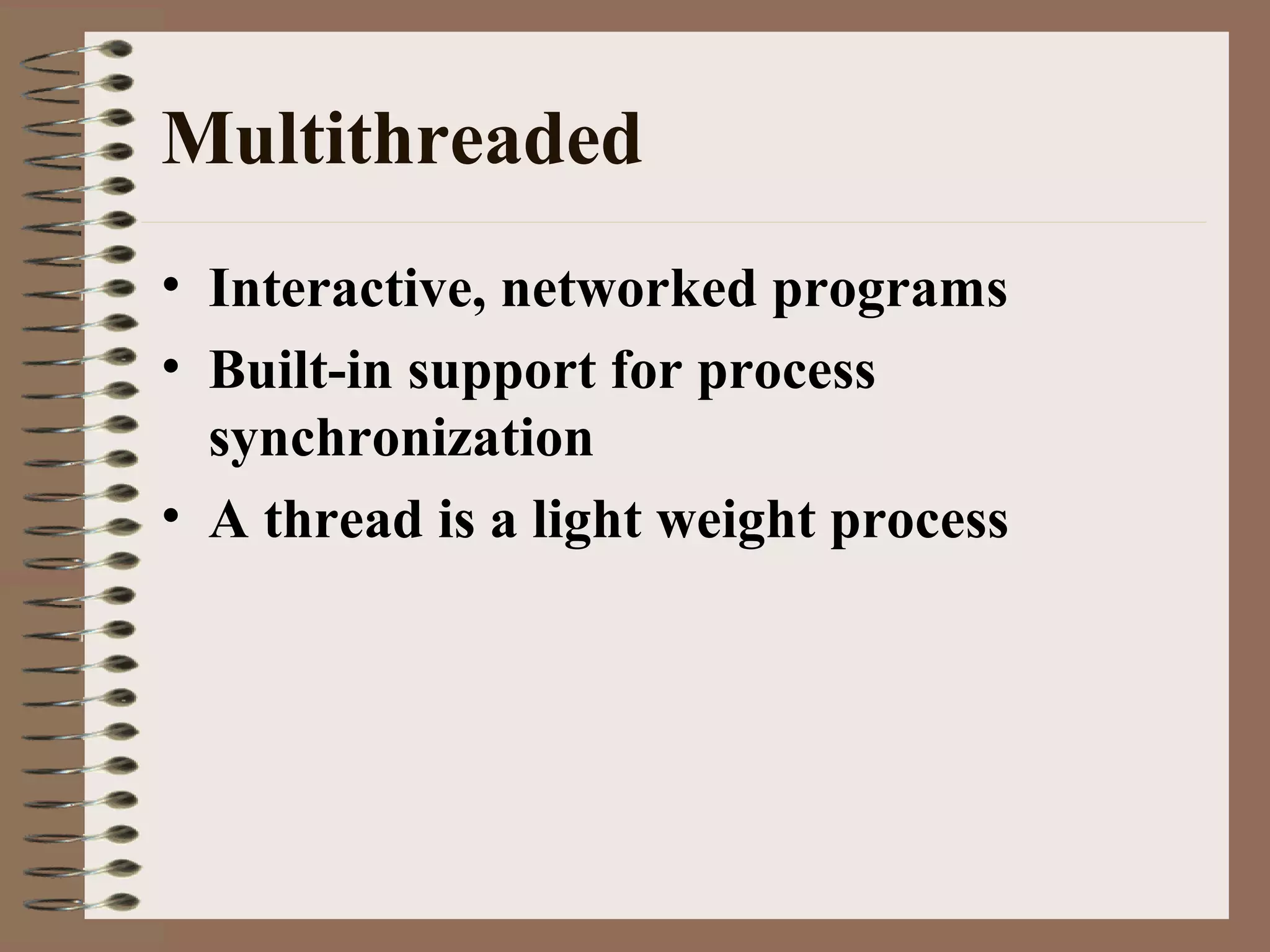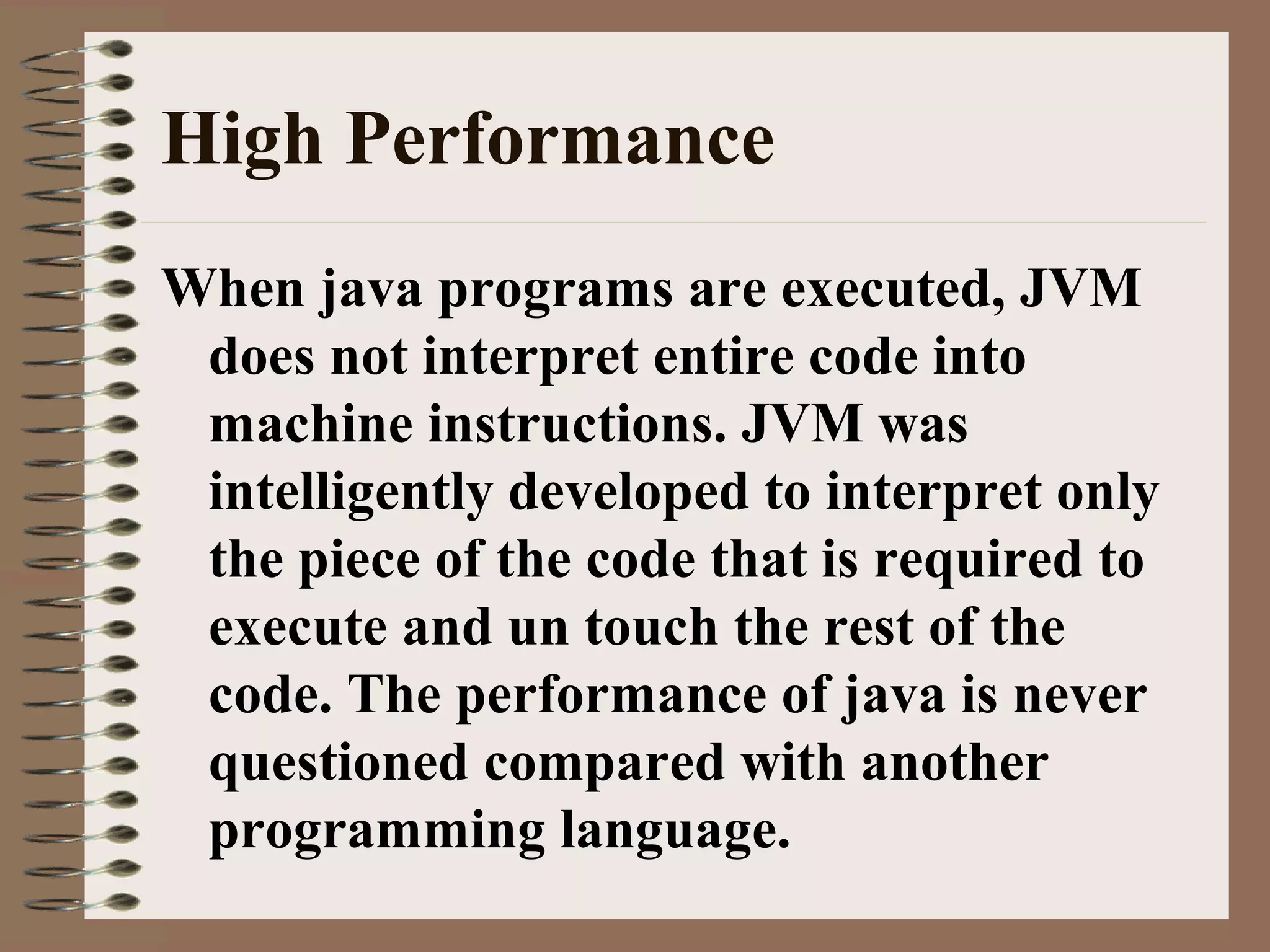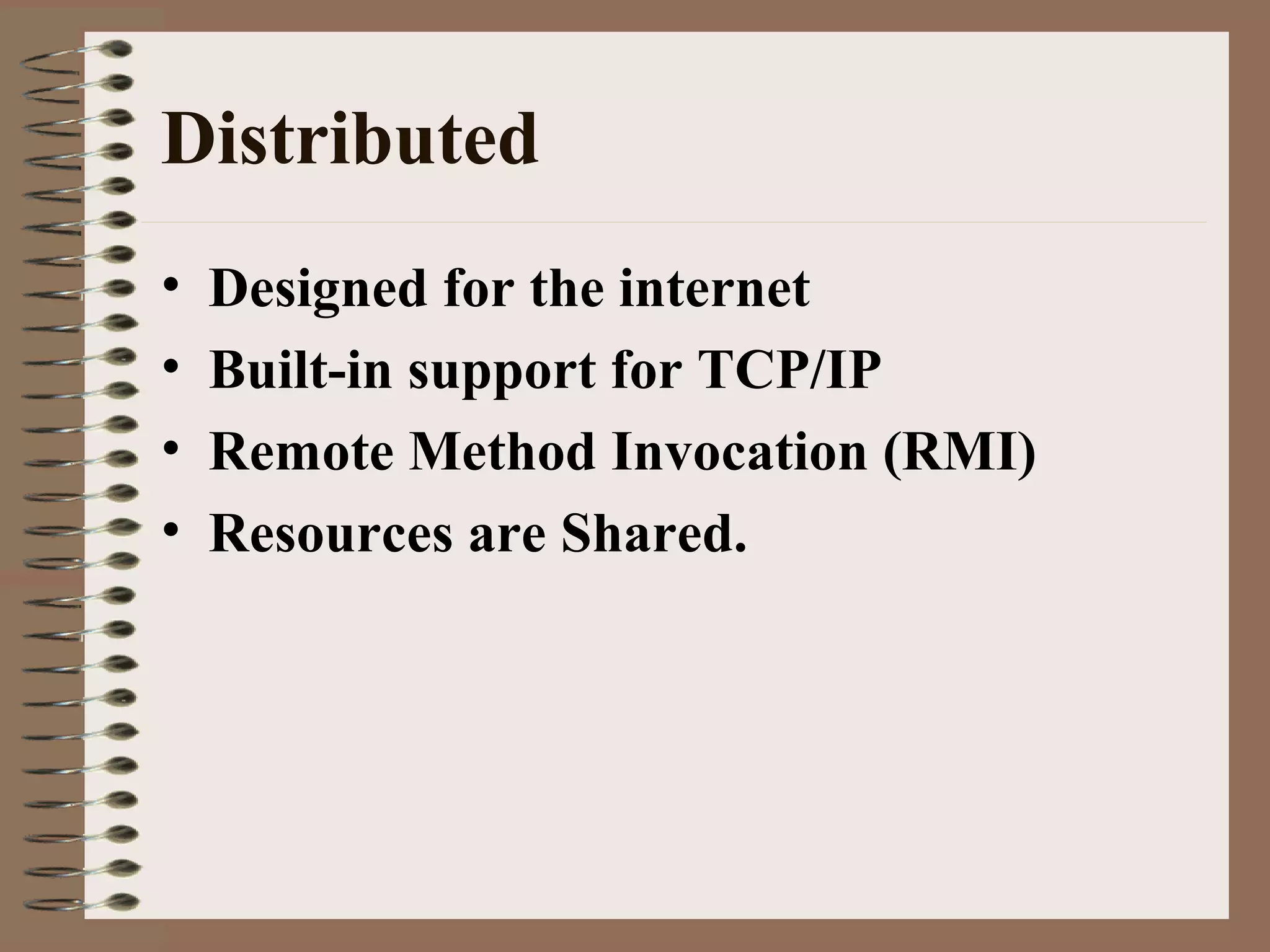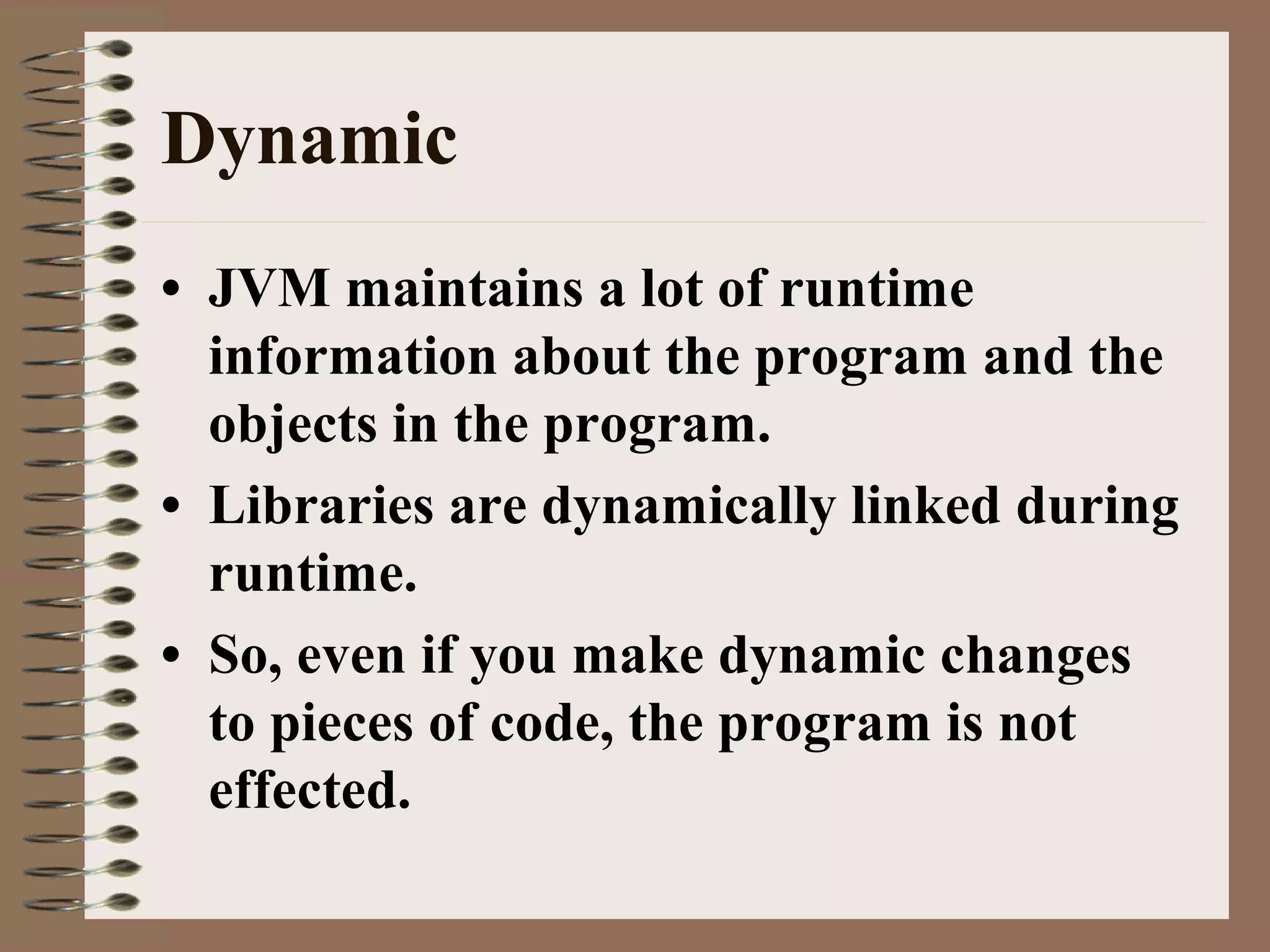The document lists key Java buzzwords and explains various features, including simplicity, security, portability, and object-oriented design. It highlights Java's strengths such as being robust, multithreaded, architecture-neutral, and dynamic, emphasizing its capability to operate across different systems and environments. Overall, Java is portrayed as a high-performance language that is easy to learn and suitable for modern applications, especially in distributed environments.

